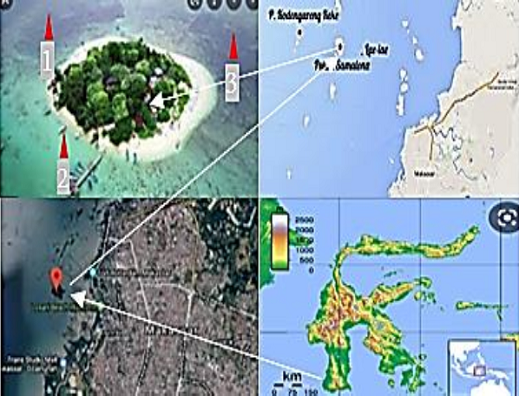Investigation of Microplastic Exposure to Marine Fish in the Marine Tourism Area of Makassar City
Abstract
Plastic waste pollution in the marine environment triggers the formation of microplastics dissolved in seawater. Microplastics are one of the nutrients for plankton and phytoplankton. Through the food chain, microplastics can accumulate in the bodies of marine biota, until they finally reach the human body. The purpose of this research is to investigate and determine the microplastic group in fish in Makassar City KWB destinations. The method applied is maceration extraction using 70% C2H5OH for 3 days, then extracted with N-Hexane. The non-polar extracts identified the microplastic components using FTIR spectroscopy and analyzed the types of microplastics based on their absorption spectrum images. The results of the study were that all fish samples coded PS.B.1, PS.B.2, PS.B.3, were contaminated with secondary microplastics. Types of microplastics were identified, namely PP, PVC, PE, PS, PET and PC. The microplastic contaminants are thought to be the result of community activities. The public needs to be aware of the potential for microplastic accumulation in the bodies of marine fish that are consumed. Managers of Makassar City KWB destinations are advised to apply a pattern of supervision to the community to care about waste and educate the implementation of plastic waste recycling management
Downloads

Copyright (c) 2022 Ismail Marzuki, Irham Pratama Putra

This work is licensed under a Creative Commons Attribution-NonCommercial-NoDerivatives 4.0 International License.
Authors who publish with this journal agree to the following terms:
- Copyright on any article is retained by the author(s).
- The author grants the journal, the right of first publication with the work simultaneously licensed under a Creative Commons Attribution License that allows others to share the work with an acknowledgment of the work’s authorship and initial publication in this journal.
- Authors are able to enter into separate, additional contractual arrangements for the non-exclusive distribution of the journal’s published version of the work (e.g., post it to an institutional repository or publish it in a book), with an acknowledgment of its initial publication in this journal.
- Authors are permitted and encouraged to post their work online (e.g., in institutional repositories or on their website) prior to and during the submission process, as it can lead to productive exchanges, as well as earlier and greater citation of published work.
- The article and any associated published material is distributed under the Creative Commons Attribution-NonCommercial-NoDerivatives 4.0 International License.





_copy1.png)










